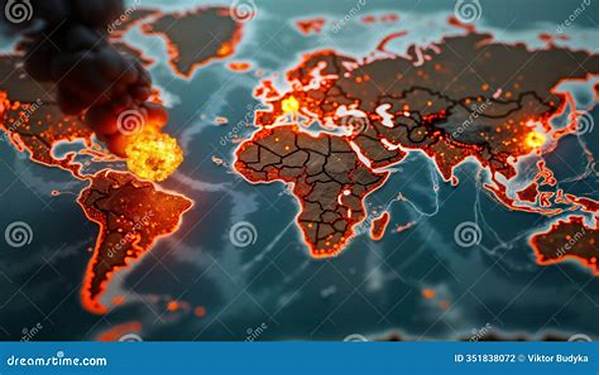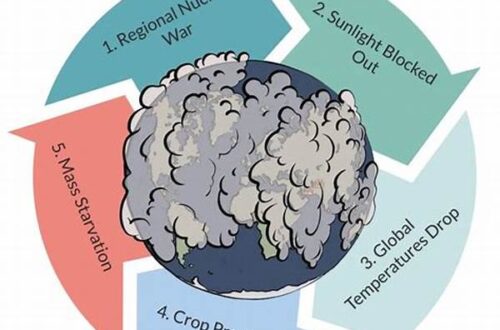The Invisible Impact of Armed Conflicts
Throughout history, human conflict has had devastating effects not only on populations but also on the natural environment. The destruction of ecosystems in warzones is an often overlooked consequence of warfare, contributing to long-lasting ecological damage. During armed conflicts, environmental degradation occurs at an accelerated pace, leaving landscapes scarred and biodiversity diminished. This not only affects flora and fauna but also disrupts human livelihoods that depend on natural resources. Warzones become breeding grounds for further environmental issues, with pollution, deforestation, and habitat destruction becoming rampant.
Military activities in conflict areas result in the indiscriminate use of weaponry, which destroys habitats and pollutes the land and water sources. Additionally, the movement of armed forces and the establishment of base camps lead to soil compaction, deforestation, and contamination of ecosystems. The construction of military infrastructure, such as roads and facilities, further exacerbates the destruction of ecosystems in warzones. Such activities often result in habitat fragmentation, making it difficult for wildlife to survive and reproduce.
Furthermore, the destruction of ecosystems in warzones has significant repercussions for human populations. People rely on natural resources for food, medicine, and shelter, and the degradation of these resources can lead to food insecurity, poverty, and displacement. Additionally, damaged ecosystems take decades or even centuries to recover, leading to prolonged economic and social instability in regions affected by war. As such, the environmental impact of war extends far beyond the immediate destruction, requiring concerted efforts for remediation and restoration.
Causes of Ecosystem Destruction in Warzones
1. The destruction of ecosystems in warzones is often driven by the use of explosive weapons, which damage vegetation and disrupt wildlife habitats. These detonations lead to soil erosion and the contamination of air and water.
2. Chemical warfare contributes significantly to the destruction of ecosystems in warzones, as toxic substances seep into the environment, obliterating plant and animal life, and creating uninhabitable conditions for years.
3. The establishment of military bases and infrastructures results in the destruction of ecosystems in warzones through deforestation, land degradation, and pollution, disrupting natural habitats and biodiversity.
4. Looting and illegal exploitation of natural resources by armed groups exacerbate the destruction of ecosystems in warzones. This exploitation depletes forests, wildlife, and minerals, leading to ecological imbalance.
5. Displacement of local communities due to conflict further contributes to the destruction of ecosystems in warzones. Displaced populations often resort to unsustainable practices to survive, such as over-harvesting of natural resources.
Human Impact and Ecosystem Recovery
The destruction of ecosystems in warzones has severe consequences on human populations reliant on natural resources. Communities dependent on agriculture, fishing, and forestry for their livelihoods experience enormous setbacks when ecosystems are degraded. The loss of biodiversity and the collapse of natural systems undermine food security and limit access to clean water and other essential resources needed for survival. This, in turn, exacerbates poverty and can lead to forced migration as people seek more habitable locations.
Efforts to recover and restore ecosystems devastated by warfare face numerous challenges. Environmental rehabilitation in war-torn regions requires both immediate and long-term interventions. Remediation projects must focus on clearing landmines and unexploded ordnance, reforesting degraded landscapes, and restoring wetlands and water bodies. International cooperation and investment are crucial in supporting these initiatives. Without global efforts, the restoration of ecosystems affected by war becomes an insurmountable task for the affected nations alone.
Long-term Consequences of War on Ecosystems
1. The destruction of ecosystems in warzones leads to long-term species endangerment as degraded habitats can no longer support the existing wildlife populations.
2. Soil degradation due to the destruction of ecosystems in warzones results in loss of arable land, hindering agricultural productivity and leading to food shortages.
3. Water sources become contaminated through the destruction of ecosystems in warzones, obstructing clean water access for human populations and contributing to health crises.
4. The destruction of ecosystems in warzones significantly impacts climate change by increasing carbon emissions through deforestation and soil disruption.
5. Poor governance and instability post-conflict can hinder efforts to address the destruction of ecosystems in warzones, delaying recovery and sustainability initiatives.
6. Economic loss is immense as the destruction of ecosystems in warzones devastates industries dependent on natural resources, particularly agriculture and tourism.
7. Cultural heritage is often linked to natural landmarks, and the destruction of ecosystems in warzones erodes cultural identity and legacy.
8. Social tensions may arise from competition over dwindling natural resources caused by the destruction of ecosystems in warzones.
9. Efforts to rehabilitate ecosystems must contend with lingering landmines and unexploded ordinances, complicating recovery initiatives.
10. International collaborations are necessary to address the destruction of ecosystems in warzones through joint restoration and policy-making initiatives.
Mitigating Environmental Damage in Conflict Zones
Mitigating the destruction of ecosystems in warzones requires strategic planning and international collaboration. Preemptive measures can be integrated into military strategies to minimize environmental damage. This includes employing environmentally friendly technologies and avoiding tactic methods that result in extensive habitat destruction. Establishing designated conservation areas within conflict zones can protect fragile ecosystems and biodiversity. Such initiatives require compliance and cooperation from all involved parties, including non-state actors, national governments, and international bodies.
Post-conflict environmental recovery must become a priority in peacebuilding processes. Ecosystem restoration should be integrated into humanitarian aid and reconstruction efforts. International assistance, both in terms of funding and personnel, is crucial to implement effective ecological remediation strategies. Moreover, educating local communities about sustainable land use practices can contribute to long-term environmental stewardship. By prioritizing environmental health, nations can work towards rebuilding resilient societies and ensuring sustainable developments in regions recovering from conflict.
Diplomatic and Legal Frameworks for Protection
Decisive diplomatic and legal frameworks are essential to safeguard the environment during times of conflict. International humanitarian law, which governs the conduct of war, should be expanded to incorporate environmental protection mandates explicitly. Existing agreements, such as the Environmental Modification Convention, must be reinforced to prevent the destruction of ecosystems in warzones. Nations must also be held accountable for ecological damage caused during conflicts, with reparations directed towards environmental recovery efforts.
Additionally, fostering cooperation between environmental organizations, governmental bodies, and military officials can facilitate the creation and enforcement of regulations designed to mitigate environmental harm. International monitoring bodies can aid in assessing environmental damage and ensuring compliance with environmental protection agreements. By integrating ecological considerations into conflict resolution frameworks, the global community can effectively address the widespread issue of the destruction of ecosystems in warzones and contribute to lasting peace and environmental sustainability.
Summary: Addressing Wartime Ecological Destruction
The destruction of ecosystems in warzones remains a critical issue with far-reaching consequences for both natural environments and human communities. The devastating impact of military activities, coupled with the long-term effects of ecological degradation, underscores the urgency of addressing this challenge. Environmental devastation leads to the loss of biodiversity, habitat destruction, and resource depletion, all of which hinder social and economic stability in affected regions. Wars leave deep ecological scars, and the path to recovery is both slow and complex, requiring sustained international intervention.
Efforts to mitigate the destruction of ecosystems in warzones must focus on incorporating environmental considerations into military strategy and peacebuilding initiatives. The restoration of damaged ecosystems necessitates an integrated approach, involving community participation, international collaboration, and policy innovation. Legal frameworks must adapt to include stronger provisions for environmental protection in conflict settings. By prioritizing ecological sustainability and resilience, the global community can foster lasting solutions that restore ecosystems and promote peaceful coexistence in post-conflict areas. Addressing the environmental impact of warfare is essential for the revitalization of ecosystems and the well-being of affected populations.





